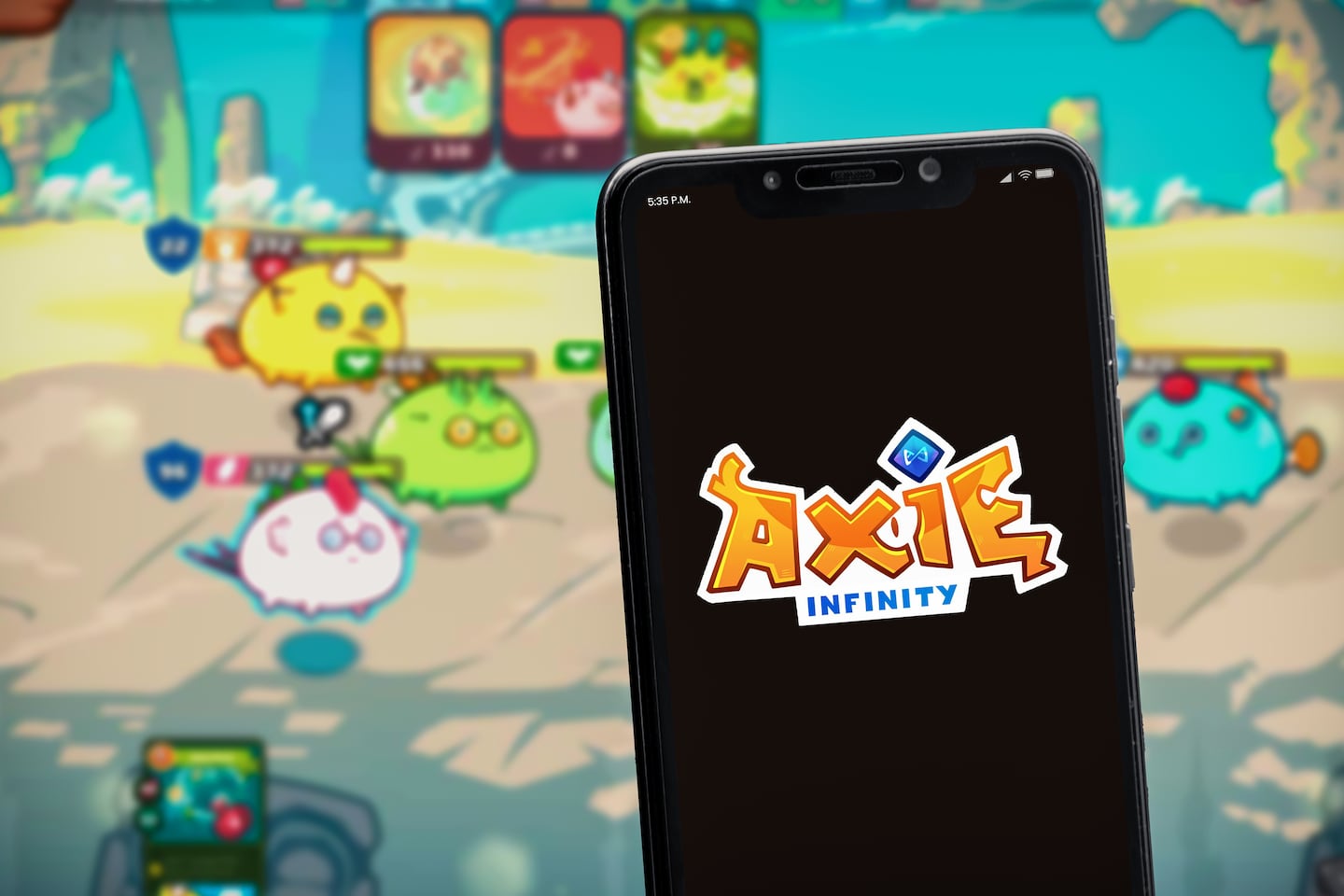- Aleks Larsen tells DL News why it's a mistake to give up on the web3 stalwart.
- "Axie Infinity" pioneered play-to-earn gaming before cratering in the bear market.
- Tokenomics is little match for the lush world building and gameplay in "Skyrim" and "Call of Duty."
The interview rooms at Token2049 in Singapore earlier this month had adjustable stools that sank lower the longer you sat on them. Thanks to tight security at the conference, I was late for the meeting. Sky Mavis Chair Aleks Larsen was practically on the floor.
A better writer might be able to spin this into some sort of metaphor. Maybe a quip about the value of “Axie Infinity’s” two tokens? Or something about “Axie Infinity’s” perceived slow decline over time into irrelevance?
Cautionary tale
“Axie Infinity,” of course, epitomised the wave of blockchain-based games that proliferated during the 2021 bull market. Now, it has become the definitive cautionary tale about the boom-and-bust cycles in web3
Developed by Sky Mavis, a Vietnam-based game publisher, “Axie” pioneered play-to-earn gaming. It attracted millions of players — some of whom played it for a living — then its token collapsed, it was hacked, and the industry dismissed it as little more than a scam.
Even so, Larsen, the chairman and co-founder of Sky Mavis, says “Axie” is not done yet. “I feel like ‘Axie’ made this industry happen,” he tells DL News as we attempt to stop our chairs from sinking.
Larsen is so over people trash-talking his project. “I guess whatever makes them happy, I suppose,” he says, sighing. “We keep building.”
Web3 games are on a mission to compete with their web2 rivals. Many projects promise graphics and gameplay on par with the industry’s top AAA games, including big-budget studio games such as “Skyrim” and “Call of Duty.” Think the production values of “Hogwarts Legacy” plus web3.
But as web3 develops, Larsen is growing concerned about games failing to adequately leverage the benefits of web3 technology, and those that call themselves AAA games.
“You’re basically competing with the AAA games of web2 without the benefits of web3 in any real tangible way,” he warns.

According to Larsen, the AAA games label has devolved into a “marketing gimmick.” Rather than proving themselves through their work, teams are fixated on metrics including NFT floor prices or the number of developers they employ.
And not every good game is AAA. Check out the rankings on Steam and you’ll see indie games are well represented.
Not a forgiving bunch
Gamers are not a forgiving bunch. A former Steam employee told me they used to prank players by posting about updates and not changing anything, and players would still complain about the new “changes.” Still, they will often opt for compelling lore, world building, and interesting premises over slick graphics.
Games such as “Star Atlas” and “Illuvium” have traded insults over whether the other team is big or experienced enough to really produce the game they promise. Larsen sees it differently: Too many cooks can spoil the brew, particularly if they’re seconded from other studios.
“People inside the industry know how difficult it is to work together over time,” he says.
Larsen himself advocates an iterative development approach, advocating swift responsiveness to user feedback and working in start-up mode. Initial versions of “Axie” were “incredibly low quality and very simple,” he says.
Yet the industry is beset with delayed projects that under-deliver, and some are “Axie Infinity’s” biggest contractors.
He views the criticisms, especially from those who haven’t produced tangible contributions, as detrimental to the industry’s collaborative growth. “The people that I want to partner with are those who are in the market,” he says.
The play-to earn experiment
“Axie Infinity,” developed by Sky Mavis, has experienced a tumultuous journey, marked by groundbreaking success, searing criticism, and drastic shifts in profitability.
When the game launched in 2020, it pioneered the concept of play-to-earn, an idea that people could earn money playing video games. For those in developing countries, playing the game could earn more than the local minimum wage.
At the height of hype, “Axie Infinity” became a cultural phenomenon, particularly in places like the Philippines. Yield Guild Games founder Gabby Dizon once told me several generations of his family played it. Dizon himself ended up one of the biggest “Axie” breeders in the world.
Fans wrote songs and musicals about “Axie,” made merchandise and organised clubs and communities around the game.
There was a K-pop girl band called the Axie Sisters. A company created an app where people could pay their utility bills using the game’s Smooth Love Potion token.
Colourful and chubby
“Axie,” since its inception, was experimental in nature, according to Larsen. “It was really hard for us to get ‘Axie’ up and running. It took us a really long time, much longer than what most people realise.”
The premise of the original game was simple. To get started, players needed to purchase three axies — think colourful, chubby axolotl-type creatures — to use in player-versus-player battles.
Smooth Love Potion craters
Different axies had different strengths and weaknesses. Whoever won the match would receive a token called Smooth Love Potion (in earlier iterations, it was called Small Love Potion).
“Axie Infinity” used two tokens: AXS and SLP. At their all time highs, they sported a combined market cap of $11 billion.
Today, “Axie” has lost 97% of its value and SLP is down 99%. From February 2022 onwards, daily players dwindled to 250,000 from 2.7 million.
My original axies have vanished in some wallet I can’t remember, consigned to that part of my mind I try to repress where my starving Neopet and abandoned Tamagotchi also live.
Then in March 2022, the chain it was built on, called Ronin, was hacked by North Koreans in one of the biggest cyber-heists ever. The culprits made off with more than $600 million.
Given the damage, it’s rather extraordinary that “Axie” survived. The gaming industry, and crypto writ large, forgot about the onetime juggernaut. Still, quietly and steadily, the 270 employees at Sky Mavis have soldiered on.
But to what end? Will “Axie” follow the same trajectory as most of crypto and eventually surge back to something close to its zenith? Or is it doomed to be a vestige of its former self for the foreseeable future?
Last week, I revisited “Axie” to check out the gameplay.
It’s one of only two web3 games I’ve played for weeks at a time and actually gotten into. My boyfriend couldn’t stand my early 2022 “Axie Infinity” phase. He’d roll his eyes every time he heard the soundtrack coming from my laptop.
My original axies have vanished in some wallet I can’t remember, consigned to that part of my mind I try to repress, where my starving Neopet and abandoned Tamagotchi also live.
I acquired some new ones and re-downloaded the Sky Mavis hub. It’s still basic. It’s still cute. And unlike a lot of its critics who make big promises that never seem to come to fruition, it actually exists.
Got a web3 gaming story? Contact me at callan@dlnews.com.
Correction: An earlier version of this story misidentified Aleks Larsen as CEO of Sky Mavis. He is co-founder and chair of the company.



